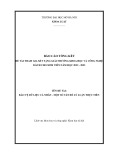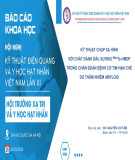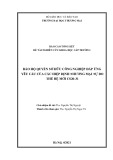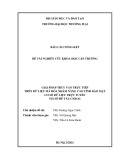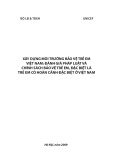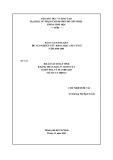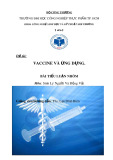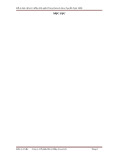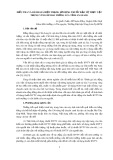
RESEARC H Open Access
Sphingosine-1-phosphate promotes the
differentiation of human umbilical cord
mesenchymal stem cells into cardiomyocytes
under the designated culturing conditions
Zhenqiang Zhao
1
, Zhibin Chen
1*
, Xiubo Zhao
2
, Fang Pan
2
, Meihua Cai
1
, Tan Wang
1
, Henggui Zhang
2†
, Jian R Lu
2†
and Ming Lei
3†
Abstract
Background: It is of growing interest to develop novel approaches to initiate differentiation of mesenchymal stem cells
(MSCs) into cardiomyocytes. The purpose of this investigation was to determine if Sphingosine-1-phosphate (S1P), a
native circulating bioactive lipid metabolite, plays a role in differentiation of human umbilical cord mesenchymal stem
cells (HUMSCs) into cardiomyocytes. We also developed an engineered cell sheet from these HUMSCs derived
cardiomyocytes by using a temperature-responsive polymer, poly(N-isopropylacrylamide) (PIPAAm) cell sheet technology.
Methods: Cardiomyogenic differentiation of HUMSCs was performed by culturing these cells with either
designated cardiomyocytes conditioned medium (CMCM) alone, or with 1 μM S1P; or DMEM with 10% FBS + 1 μM
S1P. Cardiomyogenic differentiation was determined by immunocytochemical analysis of expression of
cardiomyocyte markers and patch clamping recording of the action potential.
Results: A cardiomyocyte-like morphology and the expression of a-actinin and myosin heavy chain (MHC) proteins
can be observed in both CMCM culturing or CMCM+S1P culturing groups after 5 days’culturing, however, only the
cells in CMCM+S1P culture condition present cardiomyocyte-like action potential and voltage gated currents.
A new approach was used to form PIPAAm based temperature-responsive culture surfaces and this successfully
produced cell sheets from HUMSCs derived cardiomyocytes.
Conclusions: This study for the first time demonstrates that S1P potentiates differentiation of HUMSCs towards
functional cardiomyocytes under the designated culture conditions. Our engineered cell sheets may provide a
potential for clinically applicable myocardial tissues should promote cardiac tissue engineering research.
Keywords: umbilical cord mesenchymal stem cells, sphingosine-1-phosphate, engineered cell sheets
Background
Mesenchymal Stem cells (MSCs) are pluripotent cells that
are able to differentiate into various specific cell types.
Because of their plasticity, MSCs have been suggested as
potential therapies for numerous diseases and conditions.
In vitro differentiation of MSCs into cardiomyocytes offers
a new cellular therapy for heart diseases. Therefore, it is
of growing interest to develop novel approaches to initiate
differentiation of various types of MSCs into cardiomyo-
cytes. Human umbilical cord (UC) has been a tissue of
increasing interest for such purpose due to the MSCs
potency of stromal cells isolated from the human UC
mesenchymal tissue, namely, Wharton’s jelly[1]. A number
of recent studies have shown that HUMSCs are able to
differentiate towards multiple lineages including neuronal
and myocardiogenic cells in vitro, thus providing a great
potential for cell based therapies and tissue engineering
for heart diseases[1-3].
* Correspondence: chenzb3801@126.com
†Contributed equally
1
Department of Neurology, Affiliated Hospital, Hainan Medical College,
Haikou, 570102, PR of China
Full list of author information is available at the end of the article
Zhao et al.Journal of Biomedical Science 2011, 18:37
http://www.jbiomedsci.com/content/18/1/37
© 2011 Zhao et al; licensee BioMed Central Ltd. This is an Open Access article distributed under the terms of the Creative Commons
Attribution License (http://creativecommons.org/licenses/by/2.0), which permits unrestricted use, distribution, and reproduction in
any medium, provided the original work is properly cited.





